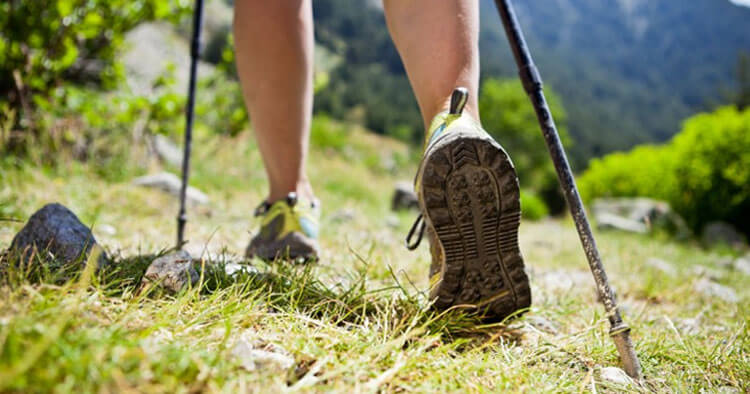Back and Joint Pain, Surgical Procedures and Protocols
Knee Osteoarthritis: Not Just For The Grey Nomads
What Is Knee Osteoarthritis?
Osteoarthritis (OA) is often referred to as a “wear and tear” arthritis. Knee osteoarthritis is a condition where your articular knee cartilage (the natural cushioning between joints) wears away. The knee is one of the most commonly affected areas with regard to osteoarthritis. And this can result in pain, swelling, stiffness with decreased function and ability to move. With osteoarthritis, age is considered a major risk factor. Where the number of OA cases rising in the population ages over 55 years old. However, this is not to say that young people under this 55 year old bracket can’t suffer knee osteoarthritis.Risk Factors For Osteoarthritis Of The Knee
Beyond age there are several other factors that can play a role in a risk of developing knee osteoarthritis. Such factors include:-
- Being female. Women are more likely than their male counterparts to suffer with osteoarthritis. This is true in many areas of the body, including the hand, knee and hip.
- Heredity factors. Where there are abnormalities in the knee, altering biomechanics and therefore adding additional joint load to specific areas of the knee.
- Injury, Or Repetitive Stress. The result of work, hobbies, or physical activity choices someone may expose their knees to more stress via injury, or repetitive loading. Such as squatting, lifting and kneeling activities.
- Weight, Carrying excess weight. Being overweight places more stress on the knee. Subsequently this increases someone’s risk of developing knee osteoarthritis.
Treatment For OA Of The Knee
Once the arthritic process has started it can never be halted, or reversed. However, the rate of progression of the disease process can be slowed. Commonly there are non-surgical as well as surgical options for the treatment of osteoarthritis of the knee. Once all other treatment options have been exhausted having a total knee replacement (TKR) remains the final step to relieve the pain of knee osteoarthritis.TKR In The Young And Old
Following having a TKR it is not recommended that you run on the prosthesis. There is around a 90% survival rate of TKR hardware lasting 10-15 years following surgery. This survival rate of the hardware is a major reason why managing younger patients with osteoarthritis can be challenging. Having a total knee replacement as a treatment approach for knee osteoarthritis works very well in the older population. However, because typically greater demands are placed on their knees of younger patients, a TKR is very much a last resort in this population. Yet in saying this, all patients will need to manage their loading following a TKR. Requiring individuals to be realistic about their goals, especially relevant for the younger patient.Non-Surgical Treatment Of Knee OA
Research suggests that non-surgical treatment of osteoarthritis of the knee can improve symptoms. Typical conservative knee OA management may include:- Anti-inflammatory medication – some patients can use these safely to good effect for a very long time. However, others will suffer side effects from either short, or long term use.
- Supplements including glucoasmine and fish oil have limited research proving their benefit. There is however, substantial anecdotal evidence of benefit.
- Footwear adjustments and bracing options can work with some knee OA patients. Helping to support the joint, improve biomechanics and reduce load on the knee. This can work to both reduce pain and improve function. However, it is suggested that any benefits are lost when the brace/footwear adjustments are not being used.
Exercise Your Way Through Your Knee Osteoarthritis
There is a good body of research suggesting that exercise is the best medicine. Appropriate physical exercise, being both general activity and targeted strengthening can have a positive impact on OA. Coupling exercise with dietary changes to reduce the intake of foods that trigger inflammation. With generally maintaining a health diet, to assist with weight management can go a long way to reducing pain and increasing function in those suffering with knee osteoarthritis.- Activity modification and targeted exercises. Activity modification works to reduce loading stress to the joint. Whereas targeted exercises like muscle strengthening can help restore functional losses.
- General exercise and weight management. Appropriate exercise has been shown to reduce pain and improve function in patients with early knee OA. For the obese patient losing weight will also improve any associated knee OA symptoms.
Worth Noting: Is that unfortunately any beneficial effects of exercise are lost six months after the exercise/training has ceased. Therefore, it is important with osteoarthritis of the knee that the management is consistent. Changes should always aim to be a long term lifestyle change, not just a short term fix.
- Injections. Injection of hyaluronic acid, as well as cortisone injections have been used to good effect for the short term relief of knee OA. This approach is more typically used when someone is having an acute flare up of their symptoms. Rather than being part of an ongoing management regime.
Surgical Management Options For Osteoarthritis Of The Knee
- Surgical management as previously mentioned is typically engaged only once all other treatment options have failed to achieve a satisfactory result.
- Surgical treatments can offer a good solution for osteoarthritis of the knee. And even allow for a return to some athletic activities previously impossible due to pain reasons prior to surgery.
- Surgical management may include an arthroscope / debridement (basically like a clean up and wash out of the joint). As well as a partial, or unicompartmental knee replacement. And ultimately a total knee replacement (TKR).
Disclaimer: This information is provided as an educational service and is not intended to serve as medical advice. Anyone seeking specific medical advice or assistance on Knee Osteoarthritis: Not Just For The Grey Nomads should consult his or her general practitioner, physiotherapist, orthopaedic surgeon or otherwise appropriately skilled practitioner.


